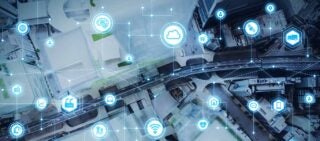- Resources
- Can Facebook, Google and Microsoft inspire data center innovation at Climate Week?
Resources
Can Facebook, Google and Microsoft inspire data center innovation at Climate Week?
Published: September 24, 2019 by Tom Murray
One focus area at this week’s UN Climate Action Summit is Energy Transition, where one of the expected outcomes is bold new “commitments from the IT sector (individually or collectively) on energy efficiency and the leveraging of technology.”
I’m excited to see what new commitments and momentum arise from Climate Week because emerging technologies like sensors, analytics, and AI can play an important role in the transition to a 100% clean economy which means that by 2050, we can’t produce any more climate pollution than we can pull out of the air. Getting there will involve shifting our entire economy power plants, transportation, factories, and more as well as developing and deploying new technology that can make 100% clean a reality.
The good news for businesses is that investing in and developing cutting-edge technologies also boosts the bottom line.
Nonetheless, according a soon-to-be published EDF report on how businesses are using “Fourth Wave” technologies (like AI, automation technologies, blockchain, data analytics and sensors), only 59% of business leaders surveyed are currently investing in innovative tech with sustainability and profitability in mind. That’s compared to 90% of respondents who believe that tech can boost ROI and reduce environmental impact.
One way that companies in the IT sector can close this opportunity gap and deliver on any forthcoming Climate Week commitments is through energy innovation in data centers, one of the largest consumers of electricity on the planet, 30% of which sit unused (a.k.a. “zombie servers”).
Here’s how three leading companies are addressing the data center challenge and reaping the benefits and why we need more businesses to invest in innovation.
Facebook has 15 data center campuses around the globe (either online or under construction), each supported by 100% renewable energy.
Now, it’s using machine learning to optimize the energy performance of its data centers. Every minute new inputs like seasonality, weather, and IT capacity are updated and compared to historical data to provide an accurate gauge of how well systems are performing.
This real-time efficiency performance data helps Facebook data centers perform 80% more efficiently than average, and use fewer resources (like water) that add up to direct cost savings.
Microsoft

Microsoft announced that at the end of 2018, half of the power used in its data centers came from renewable sources and that it’s on target to reach 60% by the end of this year. Microsoft also hopes to hit a 70% renewable sources target for its data centers by 2023.
The company is preparing to launch a new “data-driven circular cloud initiative using the Internet of Things (IoT), blockchain and artificial intelligence (AI) to monitor performance and streamline our reuse, resale and recycling of data center assets, including servers.”
Alphabet (Google)
In 2016, DeepMind and Google worked on an AI-powered recommendation system that would improve the energy efficiency of Google’s data centers. At first, the recommendation system had operators implementing the actions; today, the new AI control system directly executes the actions.
Using AI to control the system has produced new and exciting cost- and energy-saving insights. Dan Fuenffinger, one of Google’s data center operators, said, “It was amazing to see the AI learn to take advantage of winter conditions and produce colder than normal water, which reduces the energy required for cooling within the data center.”
According to DeepMind’s website, “the system is already delivering consistent energy savings of around 30% on average, with further expected improvements.”
In short, the system will get better and smarter with more data providing benefits for business and the environment.
Tech beyond data centers
American ingenuity has unlocked innovative solutions that have put humans on the moon and ushered in the digital age. In just the last decade, solar energy prices have dropped nearly 90%. Wind power has become almost 70% cheaper. Entrepreneurs and innovators, backed by forward-looking venture capitalists, are bringing potential breakthrough technologies to the horizon on an almost daily basis.
Looking forward, we need more companies in the IT sector and across the entire economy to develop new and deploy existing technologies that can help businesses find faster and cheaper ways to reduce pollution. These same solutions can also help businesses stay ahead of the competition and accelerate the transition to a 100% clean economy.
Follow Tom on Twitter, @tpmurray
